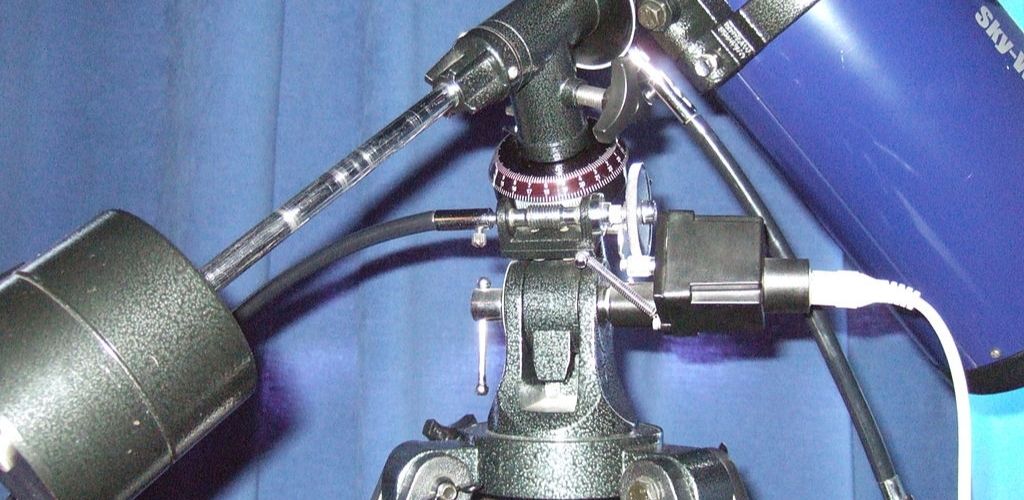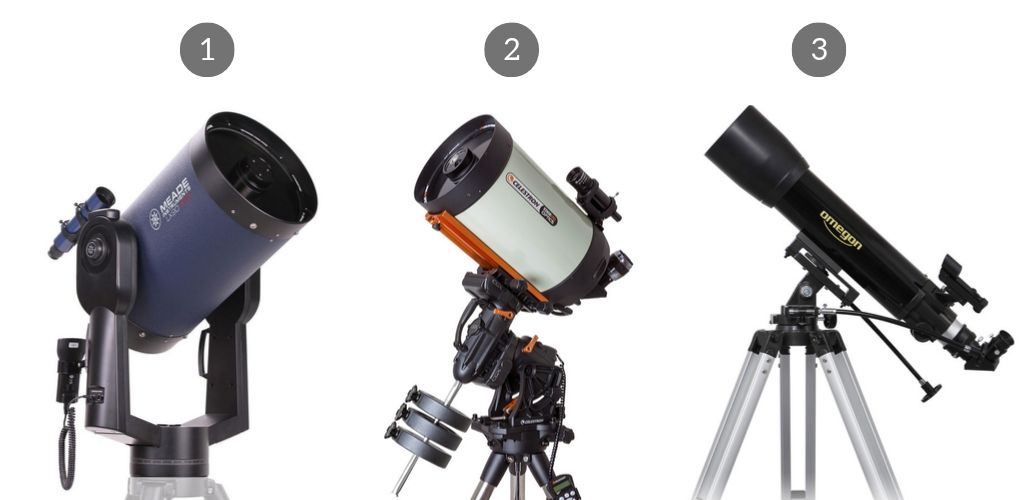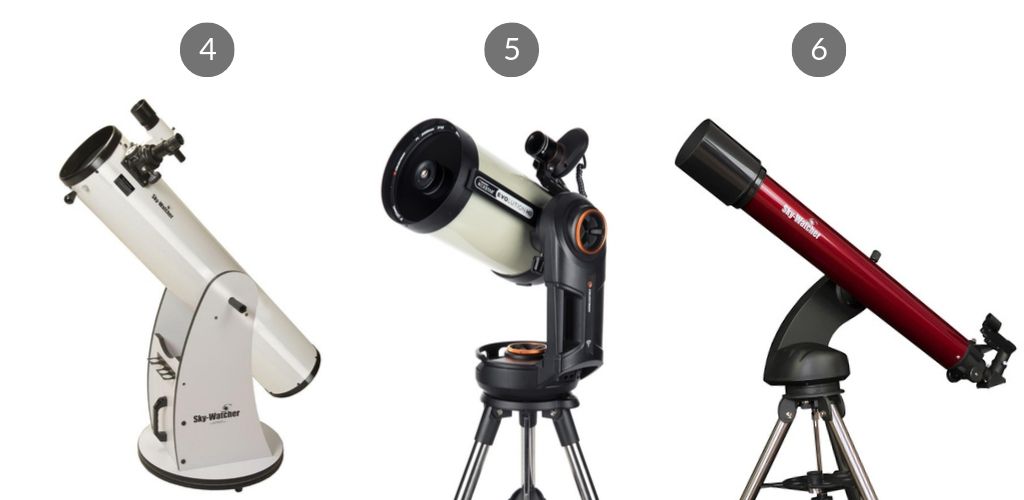
Whether you are beginner or expert, a good mount makes the difference !
Altazimuth mount, fork equatorial mount, german equatorial mount… What is the right telescope mount for YOU ? Because there is a wide variety of telescope mounts on the market, it is easy to get lost. You can make it easier for you by setting a budget and determining the types of celestial objects you plan to observe. Another criterion is your investment in astrophotography, not to mention your preference for a simple or complex system.
There are two main telescope mounts : altazimuth mount or equatorial mount. Each has its advantages and disadvantages. If you are looking for a fast and easy-to-use mount, then it is probably an altazimuth mount that will suit you best. However, if you do not want to spend too much time, avoid more sophisticated instruments with computerized systems as they take longer to install.

Altazimuth mounts, with which one can move the telescope vertically on the one hand and horizontally on the other hand, are especially adapted to take simple photos of the Moon. To get the best shots of the many jewels that the night sky offers, like galaxies, nebulae and planets, you need an equatorial mount because it follows the rotation of the sky.
While these mounts tend to be larger, heavier and more difficult to install, they can be used for long poses in astrophotography and even for observing the night sky without camera. With an equatorial mount, you simply guide the telescope only around the polar axis and not at altitude and azimuth.
Pros and cons of different types of telescope mounts

1) Altazimuth mount with fork
Most Schmidt-Cassegrain and Maksutov-Cassegrain telescopes are delivered with a forked altazimuth mount. Its name comes from where the telescope is hooked, between the teeth of the fork of the mount. The telescope rotates around the altitude axis and the base around the azimuth axis. This type of telescope mount is usually provided with electronic motors for both axes or with computerized systems that configure the telescope to point and follow thousands of celestial objects.
2) German equatorial mount
More common, this telescope mount is designed so that one of its axes is aligned with the pole. It is T-shaped whose vertical bar is inclined to be parallel to the axis of the Earth. Thus, you only have to move the telescope, placed at the end of one of the arms of the T, around this polar axis to follow the course of the stars as they rise to the east and lie down at west. It’s perfect to follow a specific celestial object in the sky.
3) Altazimuth mount
The easiest telescope mount ! It consists of two axes of movement. The first is the altitude, or vertical axis, and the second is the azimuth, which allows the observer to move the telescope horizontally. The altitude is a 360° circle around the horizon, with the north as a reference (0°) and the south at 180°. Thanks to the azimuth axis, you can manipulate the telescope on a circle parallel to the ground. Most camera tripods are altazimuth mounts. There are several types of altazimuth mount, but their motion axes are the same.

4) Dobson mount
Designed by astronomer John Dobson, this telescope mount is another type of altazimuth mount. Its concept is to equip larger telescopes with a stable and inexpensive platform that can be handled in a fluid way thanks to Teflon discs that avoid friction. The user can thus push the telescope slightly without the observed celestial object disappearing from the field of vision. It is not expensive and is a good DIY project for amateurs.
5) Fork equatorial mount
Used with Schmidt-Cassegrain telescopes, the fork equatorial mount performs a function similar to that of the german equatorial mount as it allows the telescope to be manipulated around the polar axis. The inclination of the axis is created by the adjustment screw that can be added as an accessory to a fork altazimuth mount. This allows taking pictures in long poses.
6) Single arm altazimuth mount
This mount is suitable for refracting telescopes and smaller catadioptric telescopes because the tube is attached to an arm instead of being held between the two teeth of the fork. This system is easily transportable. These motorized mounts are often supplied with a GoTo computerized tracking system, which makes these telescopes versatile and attractive. Remember that a computerized mount takes time to install.
